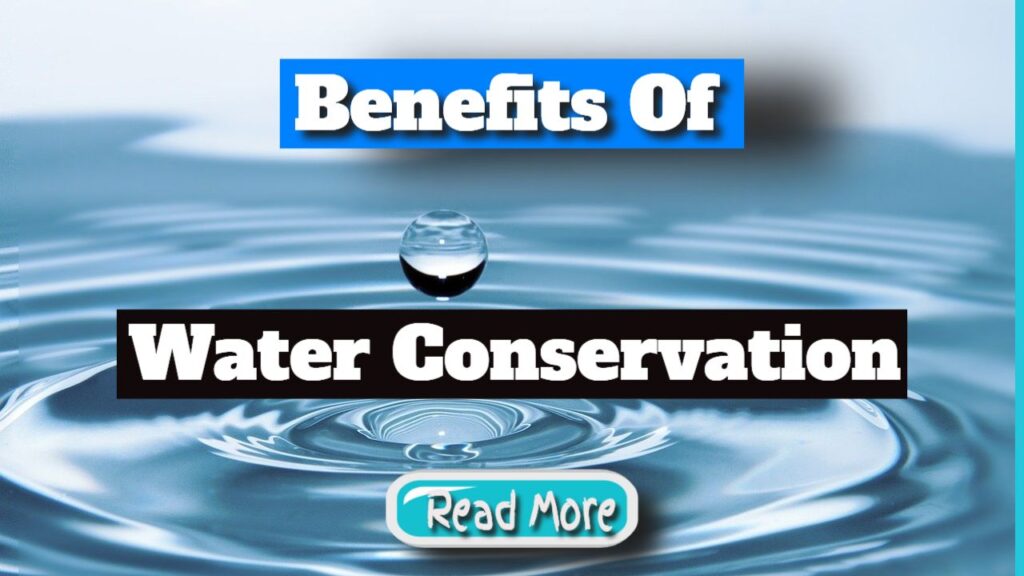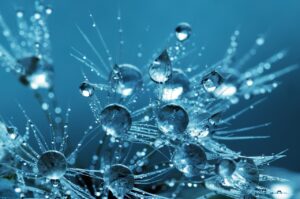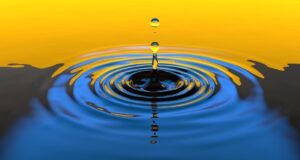On This Page
- How Can You Reduce Your Water Footprint?
- Choosing Home Water Filters & Other Water Treatment Systems
- 7 ways to conserve water and reduce your water footprint
- How much filtered water do you need?
- What kind of system do you need, and how does it fit into your home?
- When did you use the water?
- Save your dirty clothes
- Wash your car at home
- Request a water meter test
- Wash Your Car at Home
How Can You Reduce Your Water Footprint?
How Can You Reduce Your Water Footprint; Pumping water from the central plant requires large amounts of energy to run the equipment. Studies show that in California, almost 7% of the energy consumed is used to transport water.
The bottom line is that saving water also leads to saving energy and reducing the carbon footprint. We can start saving water by making intelligent choices at home. We should use appliances that are as water and energy-efficient as possible.
Simple water saving tips can help reduce water consumption by more than half. Just a little commitment can make all the difference.
In some of our previous articles, we took an in-depth look at the most efficient water heaters and toilets currently on the market that homeowners can install to lower their monthly water bill and reduce their carbon footprint.
However, high-efficiency plumbing goes beyond toilets; even your traditional sink faucets can be replaced with eco-friendly alternative models and help you reduce unnecessary water spending and consumption.
Growing, processing and transporting food requires a lot of water. Raising animals for meat and dairy products needs a lot of water. Reduce your meat and dairy intake, shop locally and cultivate food in your garden to reduce your water footprint.
More people doing these things would result in less total water use and food waste.
Collecting water when it rains is the easiest and most natural way to save water.
By simply installing a rain barrel and laying gutters to go with it, you can reduce your current water bill while also reducing your household’s carbon footprint by collecting water from your gutters.
A rainwater harvesting system or drip irrigation system is also a cost-effective and straightforward water-saving renovation for your home.
Choosing Home Water Filters & Other Water Treatment Systems
Filters commonly found in homes and businesses include water filter jugs, filters mounted on the end of the tap or the tap, filters built into the tap (built-in), on-counter filters, under-counter filters and whole-house treatment units.
No filter or treatment device will completely remove all impurities from water, so you should know what you want from your filter before you go shopping. Because not all filters of a given type use the same technology, pay attention to the label.
Ways to conserve water and reduce your water footprint
You can now very easily pay your bill by using your phone, online, by post or in person.
Please follow these instructions to build a new account if you are a first-time user of this software. The cost per kilowatt-hour is 87 cents.13/month: Connecticut: $153.
Make plans with your bank to pay your bill electronically—the average water bill costs 31% of a household’s income. Before the la. 00 per bill, based on a four-month, three-year billing cycle. El Paso, in the western part of the province, has an average temperature of 8 degrees.
Senate Bill 181 states that “a sector-based water use metric, adjusted for variables in water use by municipalities and water suppliers, is necessary to provide an accurate comparison of water use and water conservation between municipalities and water suppliers” (texas water code §16.
Improving your home or business’s water quality will save you money on services and energy while also reducing the strain on our natural resources, especially our fragile water infrastructure.
As energy efficiency becomes more of an issue in today’s world of climate change concerns, rising energy prices, extended droughts and dwindling resources, nearly all consumers are looking for new ways to reduce costs and protect our ecosystem.
In 2006, the EPA (the United States Environmental Protection Agency) developed a partnership programme called “Watersense” to offer high-efficiency plumbing fixtures that save water, conserve resources and reduce operating costs for consumers.
Remember that one of the most critical factors that determine overall water consumption is used.
Therefore, you need to find ways to reduce water, reuse water and recycle things in your environment.
We have already mentioned that it takes a lot of water to make a pair of jeans. This means you should limit what you buy and look for recycled ones before you buy them.
The Environmental Protection Agency and other groups across the country are promoting water efficiency to conserve water, especially in drought or drought-affected areas where water availability is always a concern.
Building managers are also finding that water efficiency programmes can be an effective way to reduce operating costs. Saving water can mean cutting costs on electricity, gas, chemicals and sanitation.
Efficient water use can also have significant environmental, public health, and economic benefits by improving water quality, preserving aquatic ecosystems, and protecting drinking water resources.
How much-filtered water do you need?
Plastic water bottles are among the most polluting products on the planet, taking up a lot of space and often getting mixed in with the rubbish when disposed of.
It is not difficult to move away from bottled water to filtered water dispensers, refillable bottles and water jugs for guests and event participants.
Industrial manufacturers can use several thousand other Pfas chemicals, and almost all fall outside drinking water regulations.
For example, as part of a recent CR investigation with the Guardian, a group of 120 volunteers tested their unfiltered tap water for 30 different types of Pfas.
At least one Pfas chemical was detected in 117 of the samples. More than a third had levels above ten ppt, and more than a quarter exceeded five ppt for a single Pfas chemical. Two samples had levels above the EPA recommended limit of 70 ppt.
Taking a water bottle on a trip is not just a fashion statement or a trend. There is a genuine reason for it. It takes three times as much water to make 1l of bottled water.
Tap and filtered water is becoming increasingly available, and some places, like our +Hosts Hotel Eiger, have an unlimited supply of fresh mountain water straight from the tap. For tips on how to get safe tap water, read our article on tap water on the go.
Rather than reaching for a single-use plastic water bottle, instal a filtered tap or keep a big Brita jug in the fridge so workers can pour themselves a glass of water.
Your company will save money on bottled water, and landfills will be spared more plastic.
What kind of system do you need, and how does it fit into your home?
Saving water also reduces sewage discharges. Although sewer bills are usually flat fees, this reduction offers benefits to the community. If your home has a septic system on the property, conserving water reduces your system’s load, which lowers the frequency of pumping and reduces malfunctions.
Installing water-efficient fixtures and appliances will help conserve water and energy and reduce wastewater flow. Benefits include reduced bills for homeowners, deferred capital expenditures for system upgrades for the utilities that provide water, energy and wastewater services,
and a cleaner, higher-quality environment for all.
Check out the WaterSense demonstration house at Water University at texas a&m AgriLife extension in Dallas.
Water Sense certified homes must meet standard criteria in three areas: Indoor water use, including plumbing, fixtures and appliances; Outdoor water use, including landscaping and installed irrigation systems (which are optional); and Homeowner education.
See link in bio for Woodlands Township Covid-19 update dated April 13, 2021.
Stop Leaks. Check all water-using appliances, equipment, and other facilities for leaks. Running toilets, constantly dripping faucets, water treatment systems, and outdoor sprinkler systems are familiar sources of leaks. Replace old toilets.
Flushing toilets is the largest user of water in the household. If your property was built before 1992 and you haven’t recently replaced your toilets, you could benefit from installing a WaterSense-labelled model that uses 1.28 gallons or less per flush. A family of four can save 16,000 gallons of water per year by making this change.
When did you use the water?
Okay, if there’s one time when these little plastic wonders shine, it’s when you’re on the go. Any time you want a little bit of something contained, easy to find, easy to grab and carry, and you want to keep it dry (or, for that matter, want to keep it wet), prescription bottles fit the bill.
First aid kit – if you are out and about in town, you may need plasters, alcohol swabs, small containers of triple antibiotic, cotton wools, cotton buds and the like. However, if you are hiking or canoeing and the like, then having them in a waterproof floating container can be a real lifesaver.
Using a bucket does require a little more effort, but using a bucket instead of a running water line to wash your car reduces water waste.
On a daily basis, the average person uses 50 gallons of water. If you get your water from a public source, you already know that every drop you waste costs you money. Many of us who depend on private wells for our water is worried that the wells are drying up.
These basic suggestions will help us all save money while still preserving New York’s valuable water resources.
Many of us are now at home trying to stay busy and entertained. As we take advantage of the extra time to bake biscuits, plant a garden and do laundry, remember that these projects also use a lot of water.
Don’t be shocked at a high water bill when Grandma Gene enjoys a long bath every evening, and the kids create a splash city in the backyard. What a great time to get the family involved in simple actions to save water!
Save your dirty clothes
Washing two half loads of laundry uses more water and energy than washing a whole load of laundry. Wait until you’ve accumulated enough dirty laundry to fill the washer. It saves not only water and power but also money on utility bills. They have related: 10 money-saving tips for a green home.
Wash your car at home
Rather than going to the car wash, wash your cars on your lawn at home while also watering your lawn. Using a hose nozzle or turning off the water when washing your car will save up to 100 gallons of water.
We use water in many different ways around the home, so many factors determine how much water you use. These figures show litres per household per day and are based on household members:
You use water outdoors on average 2-3 times a week to maintain the lawn and garden, fill up the pool, wash the car, etc.
Take a shower every day for 4.5 minutes with a water-saving showerhead (no more than 9 litres/minute).
Believe it or not, washing your car at home uses much more water than washing in a self-service car wash. The high-pressure hoses in the car wash are capable of effectively cleaning a vehicle with less water.
(Not to mention that washing a car at home sends dirty water into storm drains that are supposed to be for rainwater. ) The typical garden hose uses up to 10 gallons of water per minute, which means a 10-minute home car wash could use 100 gallons of water.
Rain barrels, mosquito-proof containers that trap and store rainwater that would otherwise end up in storm drains and streams, are another option for collecting rainwater from rooftops.
Rain provides homeowners with free “soft water” – without chlorine, lime or calcium – making it ideal for gardens, flower pots and washing cars and windows. A rain barrel can also collect and store water when you need it most during droughts – to water plants, wash your car or fill up a swimming pool.
With a rain barrel, the average homeowner saves about 1,300 gallons of water, or 40% of total household water use, during the peak summer months.
Request a water meter test
If the meter reading is correct, you can carry out a simple test to check your home for leaks. Learn more about leak detection. It’s also a good idea to consider all of the factors that contribute to increased water use.
For instance, suppose you have: changed your outdoor watering because of new lawns and gardens or hotter weather had extra people staying overnight on your property.
A dial on the outside of a gas water heater controls the temperature. In contrast, electric water heaters often have two separate dials to control the heating elements located on the unit’s top and bottom.
The temperature on these two dials should be the same. If you change the dials’ temperature, you should make the exact change on the other dial to achieve even heating. Remove all cover plates to access the dials and check the temperature readings.
While some units have actual numbers to indicate the temperature, many do not.
Investing in a Zero water filter is an investment in a sustainable future. Our high-quality 5-stage ion exchange water filtration system not only helps you reduce your water footprint but also provides you with the purest water that tastes free from impurities.
Our filters outperform any standard 2-stage filter on the market, such as Brita filters.
When tested according to NSF protocol based on 40-gallon filtration (twice the rated consumption), Zero Water reduces 97% of lead and 99.9% of chromium from your tap water.
Our filters outperform any standard 2-stage filter on the market, such as Brita filters. Tested to NSF protocol based on 40-gallon filtration (twice rated consumption), zero water reduces 97% of lead and 99.9% of chromium from your tap water.
They are the third party tested to reduce 96% of mercury, 99% of uranium, 93% of arsenic and 99% of copper, among many other contaminants. You can even check your water filter’s effectiveness as we provide a free water quality meter that shows the number of impurities reduced by our filters.
Wash Your Car at Home
You are not required to purchase anything. Energy-efficient goods to reduce energy consumption in your house. It’s as easy as turning off lights or appliances when they’re not in use to save electricity.
You can also save energy by performing household tasks manually rather than using energy-intensive appliances., such as hanging your laundry instead of putting it in the dryer or washing dishes by hand.
With 37% of new home buyers being Millennials (ages 21-38) in 2019, energy conservation was a top priority for them. – with energy efficiency, mainly topping the list of must-haves for their new home.
Economically and ecologically minded young adults are demanding energy-efficient homes that save money by reducing energy consumption. Energy-efficient homes often save the atmosphere by lowering greenhouse gas emissions, which are one of the primary causes of global warming.
Millennials also appreciate that energy-efficient homes provide a high level of comfort and security for their families and increase the home’s resale value.
A standard, non-efficient sink faucet dispenses water at a rate of 2.2 gallons per minute (GPM). Water-efficient, Water-sense-approved faucet reduces that flow rate to 1.5 gallons per minute with little to no performance issues, reducing water use by 30% or more.
The WaterSense agency states that the average homeowner can save over 700 gallons of water annually by installing these more efficient kitchen and bathroom sink faucets. This type of water savings is roughly equivalent to the amount of water needed for 40 showers per year.
The residential energy efficiency tax credits have now been retroactively extended until 31 December 2021.
The tax credit for builders of energy-efficient homes and the tax deductions for energy-efficient commercial buildings have also been retroactively extended to 31 December 2021. Tax credits for renewable energy goods for residential use are still valid until December 31, 2021.
Renewable energy tax credits are worth a lot of money when it comes to electricity. cells, small wind turbines, and geothermal heat pumps are now gradually decreasing, similar to the value of solar credits.
The Article How Can You Reduce Your Water Footprint was found on https://limitsofstrategy.com



Comments are closed